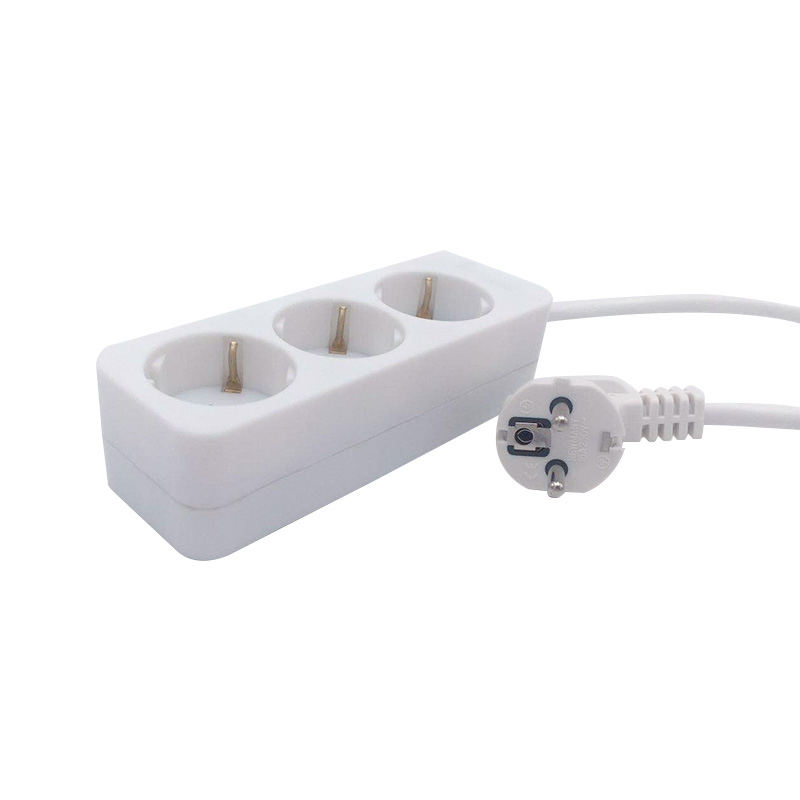Submit feedback
How to avoid wear and tear of POLYPROPENE PP POWER STRIP during use?
 2025.01.10
2025.01.10
 Industry News
Industry News
Avoiding wear and tear of polypropene pp power strips during use is the key to ensuring their long-term stable operation and avoiding safety hazards.
Ensure that the specifications of the polypropylene power strip match the use environment and load requirements. The strength, pressure resistance and temperature resistance of the power strip need to be selected according to the actual load, working conditions and environmental factors. If the power strip is overloaded or the use environment is not suitable, it is easy to cause excessive wear or damage to the power strip.
Some polypropylene power strips are designed with reinforced structures (such as thicker sheath layers, reinforced joint parts, etc.), which can increase the durability of the power strip and reduce damage caused by external impact or excessive stretching.
Polypropylene power strips need to avoid excessive stretching when in use, because long-term excessive stretching will cause material fatigue and increase the risk of breakage. Especially during installation, it should be ensured that the power strip is not pulled too tight and a certain degree of slack is maintained.
During installation and use, the power strip should avoid excessive bending. Especially at corners or in complex wiring environments, avoid forming sharp angles or sharp turns to prevent the power strip from breaking or wearing due to excessive bending. Try to avoid folding or knotting the power belt when using it.
Although polypropylene has good high temperature resistance, if it is exposed to excessively high temperatures for a long time (such as near high-temperature electrical equipment, direct sunlight, etc.), it may cause its material to age, soften, reduce strength, and increase the risk of wear and breakage. Polypropylene power belts should be avoided in high temperature areas.
Ultraviolet rays (UV) accelerate the aging of plastic materials, causing the surface of polypropylene power belts to become brittle and crack. If the power belt is exposed outdoors or in strong sunlight, it is recommended to choose a polypropylene power belt with an anti-UV coating, or use protective measures to reduce direct exposure to UV rays.
Regularly check the appearance of the polypropylene power belt, especially the high-pressure or wear-prone parts. Check for cracks, scratches, signs of aging or other physical damage. If problems are found, repair or replace them immediately to avoid more serious damage.

Clean the surface of the power belt regularly to remove stains, oil stains or chemical residues that may affect its durability. Use a soft cloth or brush to clean, and avoid scratching the surface of the power belt with sharp objects. Regular cleaning and maintenance will help maintain the elasticity and durability of the power belt.
During the use of the power belt, avoid contact with any sharp objects, such as metal edges, tools or other sharp objects. Sharp objects may cut or penetrate the power belt, causing it to be damaged or broken.
When installing or laying the power belt, you can use a protective tube or protective layer to wrap the power belt to avoid direct contact with rough or sharp surfaces on its surface and reduce the risk of physical damage.
Polypropylene power belts may be subject to vibration or impact during operation, which may cause the power belt to break. Try to avoid violent collisions during use of the power belt, especially when the equipment is started, stopped or moved. Ensure that the installation position of the power belt is stable and free from external interference.
During the installation of the power belt, avoid friction between the power belt and hard surfaces or other objects. If the power belt needs to be installed through a narrow space, it is recommended to use a slide or sheath to reduce friction and avoid wear.
Through reasonable installation, maintenance and protection measures, the service life of the power belt can be extended to ensure its stable and safe operation in harsh working environments.
 TOP
TOP
 ENG
ENG
 English
English русский
русский 한국어
한국어 Deutsch
Deutsch









